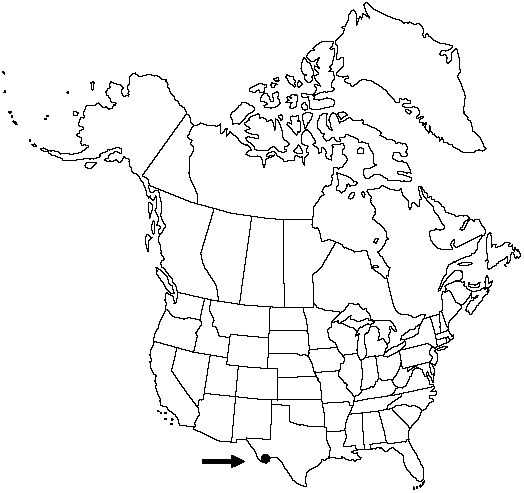FNA>Volume Importer |
FNA>Volume Importer |
| Line 20: |
Line 20: |
| | }}<!-- | | }}<!-- |
| | | | |
| − | --><span class="statement" id="st-d0_s0" data-properties=""><b>Plants </b>on rock, forming clumps or mounds.</span> <span class="statement" id="st-d0_s1" data-properties="stem architecture or shape;stem location;stem location;stem shape"><b>Stems </b>radially symmetric, underground (rhizomatous) and aerial, not readily fragmenting, irregularly forked;</span> <span class="statement" id="st-d0_s2" data-properties="stem architecture;stem location;stem architecture or shape;branch count;tip course">rhizomatous and aerial stems often with 1 branch arrested, budlike, tips straight;</span> <span class="statement" id="st-d0_s3" data-properties="stem location;stem orientation;stem orientation;branch architecture or shape">aerial stems mainly erect, seldom ascending, with budlike arrested branches throughout stem length.</span> <span class="statement" id="st-d0_s4" data-properties="rhizophore position;rhizophore count;rhizophore diameter;stem architecture;stem location"><b>Rhizophores </b>borne on upperside of stems, restricted to rhizomatous stems and lower 1/4 of aerial stems, 0.16–0.3 mm diam.</span> <span class="statement" id="st-d0_s5" data-properties="leaf growth form;leaf arrangement"><b>Leaves </b>dimorphic, not clearly ranked.</span> <span class="statement" id="st-d0_s6" data-properties="stem-leaf architecture;stem-leaf fixation or orientation;stem-leaf course;stem-leaf shape"><b>Rhizomatous </b>stem-leaves loosely appressed, straight, scalelike.</span> <span class="statement" id="st-d0_s7" data-properties="stem-leaf location;stem-leaf fixation or orientation;stem-leaf orientation;stem-leaf coloration;stem-leaf shape;stem-leaf shape;stem-leaf shape;stem-leaf length;stem-leaf width"><b>Aerial </b>stem-leaves appressed, ascending, green, linear-lanceolate to narrowly lanceolate, 1.8–2.1 X 0.49–0.56 mm;</span> <span class="statement" id="st-d0_s8" data-properties="abaxial ridge prominence">abaxial ridges prominent;</span> <span class="statement" id="st-d0_s9" data-properties="base shape;base shape;base shape;base shape;base fusion;base pubescence">base cuneate and decurrent to slightly rounded and adnate, glabrous;</span> <span class="statement" id="st-d0_s10" data-properties="margin shape;margin architecture or pubescence or shape;cilium coloration;cilium orientation;cilium orientation;cilium orientation;cilium some measurement">margins denticulate to very short-ciliate, cilia transparent, spreading to ascending toward apex, 0.02–0.04 mm;</span> <span class="statement" id="st-d0_s11" data-properties="apex shape;apex shape">apex acute or seldom blunt.</span> <span class="statement" id="st-d0_s12" data-properties="strobilus architecture or arrangement or growth form;strobilus atypical some measurement;strobilus some measurement"><b>Strobili </b>solitary, 0.5–1.2 (–2.5) cm;</span> <span class="statement" id="st-d0_s13" data-properties="sporophyll shape;sporophyll shape;sporophyll shape;abaxial ridge prominence;base pubescence;margin shape;apex shape;apex shape;apex shape">sporophylls deltate-ovate to ovatelanceolate, abaxial ridges prominent, base glabrous, margins denticulate, apex acute to obtuse.</span><!-- | + | --><span class="statement" id="st-undefined" data-properties=""><b>Plants </b>on rock, forming clumps or mounds. <b>Stems</b> radially symmetric, underground (rhizomatous) and aerial, not readily fragmenting, irregularly forked; rhizomatous and aerial stems often with 1 branch arrested, budlike, tips straight; aerial stems mainly erect, seldom ascending, with budlike arrested branches throughout stem length. <b>Rhizophores</b> borne on upperside of stems, restricted to rhizomatous stems and lower 1/4 of aerial stems, 0.16–0.3 mm diam. <b>Leaves</b> dimorphic, not clearly ranked. <b>Rhizomatous</b> stem leaves loosely appressed, straight, scalelike. <b>Aerial</b> stem leaves appressed, ascending, green, linear-lanceolate to narrowly lanceolate, 1.8–2.1 × 0.49–0.56 mm; abaxial ridges prominent; base cuneate and decurrent to slightly rounded and adnate, glabrous; margins denticulate to very short-ciliate, cilia transparent, spreading to ascending toward apex, 0.02–0.04 mm; apex acute or seldom blunt. <b>Strobili</b> solitary, 0.5–1.2(–2.5) cm; sporophylls deltate-ovate to ovate-lanceolate, abaxial ridges prominent, base glabrous, margins denticulate, apex acute to obtuse.</span><!-- |
| | | | |
| | -->{{Treatment/Body | | -->{{Treatment/Body |
| Line 50: |
Line 50: |
| | |publication year=1943 | | |publication year=1943 |
| | |special status= | | |special status= |
| − | |source xml=https://jpend@bitbucket.org/aafc-mbb/fna-fine-grained-xml.git/src/287ef3db526bd807d435a3c7423ef2df1e951227/V2/V2_392.xml | + | |source xml=https://jpend@bitbucket.org/aafc-mbb/fna-data-curation.git/src/9216fc802291cd3df363fd52122300479582ede7/coarse_grained_fna_xml/V2/V2_392.xml |
| | |genus=Selaginella | | |genus=Selaginella |
| | |subgenus=Selaginella subg. Tetragonostachys | | |subgenus=Selaginella subg. Tetragonostachys |
| | |species=Selaginella viridissima | | |species=Selaginella viridissima |
| − | |abaxial ridge prominence=prominent;prominent
| |
| − | |apex shape=acute;obtuse
| |
| − | |base fusion=adnate
| |
| − | |base pubescence=glabrous;glabrous
| |
| − | |base shape=decurrent;slightly rounded
| |
| − | |branch architecture or shape=budlike
| |
| − | |branch count=1
| |
| − | |cilium coloration=transparent
| |
| − | |cilium orientation=spreading;ascending
| |
| − | |cilium some measurement=0.02mm;0.04mm
| |
| − | |leaf arrangement=ranked
| |
| − | |leaf growth form=dimorphic
| |
| − | |margin architecture or pubescence or shape=short-ciliate
| |
| − | |margin shape=denticulate;denticulate to very
| |
| − | |rhizophore count=1/4
| |
| − | |rhizophore diameter=0.16mm;0.3mm
| |
| − | |rhizophore position=lower
| |
| − | |sporophyll shape=deltate-ovate;ovatelanceolate
| |
| − | |stem architecture=rhizomatous;rhizomatous
| |
| − | |stem architecture or shape=budlike;symmetric
| |
| − | |stem location=aerial;aerial;aerial;aerial;underground
| |
| − | |stem orientation=ascending;erect
| |
| − | |stem shape=forked
| |
| − | |stem-leaf architecture=rhizomatous
| |
| − | |stem-leaf coloration=green
| |
| − | |stem-leaf course=straight
| |
| − | |stem-leaf fixation or orientation=appressed;appressed
| |
| − | |stem-leaf length=1.8mm;2.1mm
| |
| − | |stem-leaf location=aerial
| |
| − | |stem-leaf orientation=ascending
| |
| − | |stem-leaf shape=linear-lanceolate;narrowly lanceolate
| |
| − | |stem-leaf width=0.49mm;0.56mm
| |
| − | |strobilus architecture or arrangement or growth form=solitary
| |
| − | |strobilus atypical some measurement=1.2cm;2.5cm
| |
| − | |strobilus some measurement=0.5cm;1.2cm
| |
| − | |tip course=straight
| |
| | }}<!-- | | }}<!-- |
| | | | |
| | -->[[Category:Treatment]][[Category:Selaginella subg. Tetragonostachys]] | | -->[[Category:Treatment]][[Category:Selaginella subg. Tetragonostachys]] |
Plants on rock, forming clumps or mounds. Stems radially symmetric, underground (rhizomatous) and aerial, not readily fragmenting, irregularly forked; rhizomatous and aerial stems often with 1 branch arrested, budlike, tips straight; aerial stems mainly erect, seldom ascending, with budlike arrested branches throughout stem length. Rhizophores borne on upperside of stems, restricted to rhizomatous stems and lower 1/4 of aerial stems, 0.16–0.3 mm diam. Leaves dimorphic, not clearly ranked. Rhizomatous stem leaves loosely appressed, straight, scalelike. Aerial stem leaves appressed, ascending, green, linear-lanceolate to narrowly lanceolate, 1.8–2.1 × 0.49–0.56 mm; abaxial ridges prominent; base cuneate and decurrent to slightly rounded and adnate, glabrous; margins denticulate to very short-ciliate, cilia transparent, spreading to ascending toward apex, 0.02–0.04 mm; apex acute or seldom blunt. Strobili solitary, 0.5–1.2(–2.5) cm; sporophylls deltate-ovate to ovate-lanceolate, abaxial ridges prominent, base glabrous, margins denticulate, apex acute to obtuse.
Habitat: Shaded cliffs, slopes, rock crevices, and igneous rock
Elevation: 1650–2300 m
Distribution
Tex., Mexico in Coahuila.
Discussion
In Texas Selaginella viridissima is known only from the Chisos Mountains.
Of conservation concern.
Selected References
None.
